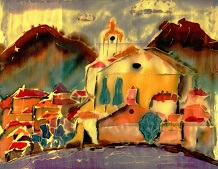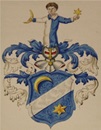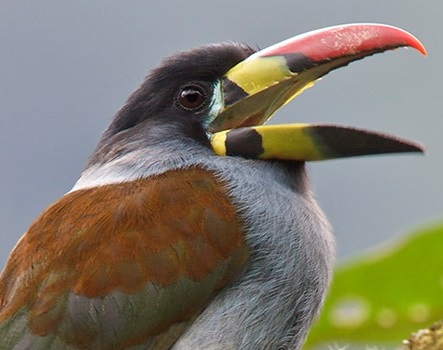 Safaris
Bergsteigen
Wandern
Inselwandern Weltweit
Safaris
Bergsteigen
Wandern
Inselwandern Weltweit
 Europa
Inselwandern
Europa
Inselwandern
 Städtewandern
Städtewandern
 Paintings
Paintings Dirk Rauschenbach
Dirk Rauschenbach
 Safaris
Bergsteigen
Wandern
Inselwandern Weltweit
Safaris
Bergsteigen
Wandern
Inselwandern Weltweit
|
 Europa
Inselwandern
Europa
Inselwandern
|
 Städtewandern
Städtewandern
|
 Paintings
Paintings |
 Dirk Rauschenbach
Dirk Rauschenbach
|
|
zurück Ecuador back Banos Rio Cosanga Banos Kolibris Guango Lodge Hummingbirds Flowerpiercers Ecuador
|
|
|
| Guango Lodge | https://cabanasanisidro.com/pages/guango_lodge.htm |
|
|
|
| Camino del Aqua | |
|
|
|
| Rio Cosanga | |
|
|
|
| Rio Cosanga | Rio Cosanga einige Farmen liegen auf der anderen Flußseite |
|
|
|
| Guango Lodge, located near the paramo and hot springs of Papallacta, is a paradise for hummingbird lovers and | Guango Lodge, situado cerca del páramo y las aguas termales de Papallacta, es un paraíso para los amantes de los colibríes y los |
|
|
|
| http://guangolodge.com/ | Rio Cosanga |
|
|
|
|
|
|
| Rio Cosanga | Rio Cosanga Fischer |
|
|
|
| Rio Cosanga Fischer | mariposa Camino del Aqua |
|
|
|
|
|
|
| Camino del Aqua | Camino del Aqua |
|
|
|
| Ente Chile am Rio cosanga Schieleente Chile Tauchente | Ente Chile Tauchente |
|
|
|
| Kolibriblumen | Kolibriblume |
|
|
|
| Camino del Aqua | Camino del Aqua |
|
|
|
| Hängende Brücken | |
|
|
|
| Kolibriblume | Kolibriblume künstlich |
|
|
|
| Kolibriblume | Guango Lodge |
|
|
|
| Kolibriblume | Camino Verde über Hängebrücke Guango Lodge mit Kolibris |
|
|
|
| el Pallion | |
|
|
|
|
|
|
| Camino Verde über Hängebrücke | Camino Verde über Hängebrücke |
|
|
|
#rio #kolibris #lodge #hummingbirds #ecuador #cosanga #banos
#river #karneval #berlin #colombia #germany #konfetti #romaniangirl #birdingtoursecuador
#peru #guango #review #amazingbirds #puertorico #deutschland #instagram #wildlife
#chile #alemania #home #rarebirds #mexico #photography #holidayseason,  |
Camino Verde Ob Sie einen Tagesausflug von Quito aus unternehmen oder ein
paar Nächte in einem wunderschönen Andental mit hoch aufragenden Bergkämmen
und bewaldeten Hängen verbringen möchten, die Guango Lodge bietet eine
großartige Gelegenheit für einen Kurzurlaub. Kilometerlange Pfade schlängeln
sich durch wunderschöne Lebensräume, in denen Orchideen von moosbewachsenen
Ästen hängen und Schwarzkastanienadler noch immer aufsteigen. Einige Gruppen
haben sogar schon den einen oder anderen Bergtapir gesichtet. Vögel sind ein wichtiger Bestandteil der Fauna von Guango. Zu den besonders interessanten Vögeln, die wir in Guango regelmäßig gesehen haben, gehören der Andenguan, der Graubrusttukan, der Türkishäher, der Scharlachbauch-, der Lakritz-, der Büffelbrust- und der Kapuzenbergtangare, der Graukopf-Buschtangar, der Schwarzkopf-, der Schwarzkappen- und der Schwarzohr-Hemispingus sowie der Schieferbuschfink. Der wachsende Orchideengarten von Guango ist ein faszinierender Ort, an dem man einige Zeit verbringen kann, da es fast immer eine schöne Auswahl an blühenden Pflanzen gibt. Guango gilt als eine der orchideenreichsten Gegenden der Welt und bietet Ihnen eine faszinierende Auswahl an einheimischen Arten, die rund um die Lodge zu finden sind. |
| 2. A pair often feeds on worms at entrance house. _Chestnut-naped Antpitta Grallaria nuchalis - 4. Most often heard at a distance. _Rufous Antpitta Grallaria rufula - 3. Many recent reports along trails. _Slate-crowned Antpitta Grallaricula nana - 5. Mostly lower in elevation, but reported a few times. _Black-capped Tyrannulet Phyllomyias nigrocapillus - 3. Uncommon with canopy flocks. _Tawny-rumped Tyrannulet Phyllomyias uropygialis - 4. Sometimes seen around the lodge. _White-banded Tyrannulet Mecocerculus stictopterus - 1. Common with mixed flocks. _Torrent Tyrannulet Serpophaga cinerea - 2. Fairly common along rivers and streams. _Tufted Tit-Tyrant - 6. One report of a bird seen along pipeline trail. _Rufous-breasted Flycatcher Leptopogon rufipectus – 3. Sometimes seen with mixed flocks. _Rufous-headed Pygmy-Tyrant Pseudotriccus ruficeps - 4. A few reports from the area. _Rufous-crowned Tody-Flycatcher Poecilotriccus ruficeps - 5. A couple of reports. _Cinnamon Flycatcher Pyrrhomyias cinnamomea - 2. Common a forest edges. _Smoke-colored Pewee Contopus fumigatus - 2. Another common tyrannid at forest edges. _Black Phoebe Sayornis nigricans - 2. Readily found along rivers and streams. _Rufous-breasted Chat-Tyrant Ochthoeca rufipectoralis - 2. Commonly found along the pipeline trail. _Slaty-backed Chat-Tyrant Ochthoeca cinnamomeiventris - 3. Sometimes encountered along streams. _Smoky Bush-Tyrant Myiotheretes fumigatus - 3. Frequently seen along pipeline trail. _Barred Becard Pachyramphus versicolor - 3. Fairly common with mixed flocks. _Red-crested Cotinga Ampelion rubrocristata - 5. A few records _Barred Fruiteater Pipreola arcuata - 6. At least one record of unknown providence. _Dusky Piha Lipaugus fuscocinereus - 3. Regularly seen with jay and mountain-tanager flocks. _Turquoise Jay Cyanolyca turcosa - 2. Seen daily, such as around lodge gleaning moths from windows. _Inca Jay Cyanocorax yncas - 2. Fairly common at forest edges. _Black-billed Peppershrike Cyclarhis nigrirostris - 4. Sometimes turns up around lodge. _Brown-capped Vireo Vireo leucophrys - 3. Fairly common with mixed flocks. _Slaty-backed Nightingale-Thrush Catharus fuscater - 5. A few reports of this forest species. _Swainson’s Thrush Catharus ustulatus - 6. A few sightings during southerly migration. _Great Thrush Turdus fuscater - 1. Abundant. _Glossy-black Thrush Turdus serranus - 3. At its upper elevational limit, but sometimes seen. _White-capped Dipper Cinclus leucocephalus - 2. Regularly seen along rivers. _Brown-bellied Swallow Notiochelidon murina - 3. Often straggles down from the paramo. _Blue-and-white Swallow Notiochelidon cyanoleuca - 1. The common swallow in open areas. _Pale-footed Swallow Notiochelidon flavipes - 3. Seen mostly over intact forest; distinctive calls. _Rufous Wren Cinnycerthia unirufa - 4. Seen with understory flocks at upper end of property. _Grass (Sedge) Wren Cistothorus platensis - 6. A couple of reports from the property. _Plain-tailed Wren Thryothorus euophrys - 3. Fairly common in thick bamboo. _Mountain Wren Troglodytes solstitialis - 1. Common right around the lodge. _Blackburnian Warbler Dendroica fusca - 1. Very common during boreal winter. _Canada Warbler Wilsonia Canadensis - 4. In small numbers during boreal winter. _Spectacled Whitestart Myioborus melanocephalus - 1. Very common with mixed canopy flocks. _Black-crested Warbler Basileuterus nigrocristatus - 2. Common at shrubby forest edges. _Citrine Warbler Basileuterus luteoviridis - 5. A few sightings of this understory warbler. _Russet-crowned Warbler Basileuterus coronatus - 3. Fairly commonly seen in the understory. _Blue-backed Conebill Conirostrum sitticolor - 2. Common with canopy mixed flocks. _Capped Conebill Conirostrum albifrons - 2. Also quit common with mixed canopy flocks. _Masked Flower-piercer Diglossopis cyanea - 1. The common flowerpiercer; easy at feeders. _Glossy Flower-piercer Diglossa lafresnayii – 3. Sometimes shows up at feeders. _White-sided Flower-piercer Diglossa albilatera – 3. Fairly common in shrubby areas. _Fawn-breasted Tanager Pipraeidea melanonota – 3. Often seen at forest edges. _Chestnut-breasted Chlorophonia Chlorophonia pyrrhophrys – 4. Infrequently encountered. _Blue-and-black Tanager Tangara vassorii – 2. One of the most common tanagers. _Paradise Tanager Tangara chilensis – 5. The very out of range group has not been seen in years. _Scarlet-bellied Mountain-Tanager Anisognathus igniventris – 3. Turns up frequently along pipeline. _Lacrimose Mountain-Tanager Anisognathus lacrymosus – 3. Present in small numbers. _Hooded Mountain-Tanager Buthraupis Montana – 2. A large, noisy and common tanager. _Buff-breasted Mountain-Tanager Dubusia taeniata – 3. Skulks more than other tanagers. _Grass-green Tanager Chlorornis riefferii – 5. A few reports from outlying trails. _Red-hooded Tanager Piranga rubriceps – 4. Irregular but sometimes seen at forest edges. _Common Bush-Tanager Chlorospingus opththalmicus – 5. A few records. Mostly lower. _Gray-hooded Bush-Tanager Cnemoscopus rubrirostris – 2. Fairly common with flocks; flicks tail. _Black-backed Bush-Tanager Urothraupis stolzmanni – 6. One group seen along Chalpi Grande trail. _Black-capped Hemispingus Hemispingus atropileus – 2. Common in the understory with flocks. _Superciliaried Hemispingus Hemispingus superciliaris – 4. Several sightings from the property. _Oleaginous Hemispingus Hemispingus oleaginea – 6. A few reports; an inconspicuous species. _Black-eared Hemispingus Hemispingus melanotis – 2. Common with understory mixed flocks. _Black-headed Hemispingus Hemispingus verticalis – 4. With canopy flocks higher up on property. _Plushcap Catamblyrhynchus diadema – 3. Regularly seen with mixed bamboo-based flocks; skulking. _Paramo Seedeater Catamenia homochroa – 5. Sometimes turns up at forest edges. _Pale-naped Brush-Finch Atlapetes pallidinucha – 2. Fairly common with understory mixed flocks. _Slaty Brush-Finch Atlapetes schistaceus – 2. Common with understory flocks. _Chestnut-capped Brush-Finch – 2. Fairly common understory bird around lodge. _Stripe-headed Brush-Finch Buarremon torquatus – 2. Fairly common in understory; inconspicuous. _Rufous-collared Sparrow Zonotrichia capensis – 1. Abundant in cleared areas. _Northern Mountain-Cacique Cacicus leucoramphus – 3. Moves with jays and other larger species. _Hooded Siskin Carduelis magellanica – 4. Shows up sporadically. Total confirmed species: 135 Updated: Jan. ’09 Hypothetical species: The following short list of birds have been reported from the property but are unusual enough to warrant further documentation before being included into the main body of the list. Some very unexpected, yet well documented, species have indeed shown up – such as Greater Ani and Paradise Tanager – but the birds below are still in need of further corroboration as they would be genuinely rare in the area. Green-fronted Lancebill – One bird apparently photographed near feeders; photos still pending. Above its normal range. Black-billed Mountain-Toucan – One report without documentation; above its normal range. White-bellied Antpitta – Once reported calling near the lodge; above its normal range. Spillman’s Tapaculo Scytalopus spillmanni – Sight reports from higher up on the property; has not been reported singing. Paramo Tapaculo Scytalopus canus – One report of two calling birds; below its expected range. Rufous-tailed Tyrant Knipolegus poecilurus – One sight report; well above its known range. Pale-edged Flycatcher Myiarchus cephalotes – One report of a bird seen sitting atop a tree behind lodge; usually a bird of lower elevations. American Redstart Setophaga ruticulla – One sight report of a bird feeding with a flock; seems likely as a boreal transient. Beryl-spangled Tanager Tangara nigroviridis – Reported once; seems possible as a wanderer, but above its expected range. White-rimmed Brush-Finch Atlapetes leucopis – A rare and very local bird anywhere. Reported once without documentation. Seems possible as this species is known from up to 3,100 m. Andean Siskin Carduelis spinescens – A few reports, but the potential for confusion with oddlyplumaged Hooded Siskins seems possible. Not well documented this far south. | Tawny-breasted Tinamou Nothcercus Julius - 6. One sighting of a single bird next to the lodge. _Torrent Duck Merganetta armata - 3. Regularly seen feeding in the Papallacta River beside the lodge. _Cattle Egret Bubulcus ibis - 6. A few sightings in the area. _Osprey Pandion haliaetus - 5. Seen irregularly along the Papallaca River. _Plain-breasted Hawk Accipiter ventralis - 4. Uncommon to rare. _Roadside Hawk Buteo magnirostris - 3. Regular in small numbers; often calls on sunny days. _Broad-winged Hawk Buteo platypterus - 3. Uncommon boreal migrant. _White-throated Hawk Buteo albigula - 5. Rare during austral winter. _Black-and-chestnut Eagle Oroaetus isidori - 3. Often seen on sunny days soaring above the lodge. _Andean Guan Penelope montagnii - 3. Sometimes seen at forests edges. _Sickle-winged Guan Chamaepetes goudotii - 5. At the extreme upper end of its range. _Spotted Sandpiper Actitis macularia - 2. Common along rivers and streams during boreal winter. _Band-tailed Pigeon Columba fasciata - 2. Seasonally common. _White-throated Quail-Dove Geotrygon frenata - 3. Hard to see but often heard. _Barred Parakeet Bolborhynchus lineola - 5. A few records of over-flying birds. _White-capped Parrot Pionus seniloides - 3. Uncommon to rare in the area. _Greater Ani Crotophaga major - 6. One record of what must have been a wandering bird. _White-throated Screech-Owl Otus albogularis - 5. Infrequently reported. _Andean Pygmy-Owl Glaucidium jardinii - 6. A couple of reports; surprisingly rare. _Rufous-banded Owl Strix albitarsus - 5. Sometimes heard from the main house. _Andean Potoo Nyctibius maculosus - 6. Very rare; one report. _Rufous-bellied Nighthawk Lurocalis rufiventris - 5. Rarely seen at dawn and dusk. _Band-winged Nightjar Caprimulgus longirostris - 5. Few reports. _White-collared Swift Streptoprocne zonaris - 3. Fairly common. _Chestnut-collared Swift Streptoprocne rutila - 4. Uncommon in the area. _Green Violet-ear Coliri thalassinus - 4. Regular at feeders. _Sparkling Violet-ear Colibri coruscans - 3. Seasonally common at feeders. _Speckled Hummingbird Adelomyia melanogenys - 3. A few regularly visit feeders. _Fawn-breasted Brilliant Heliodoxa rubinoides - 5. Uncommon at feeders, but regular. _Shining Sunbeam Aglaeactis cupripennis - 4. Seems to turn up in very small numbers seasonally. _Mountain Velvetbreast Lafresnaya lafresnayi - 2. Fairly common and most frequently seen a feeders. _Great Sapphirewing Pterophanes cyanopterus - 3. Has been seen a few times at feeders. Seasonal? _Collared Inca Coeligena torquata - 2. A common bird; daily at feeders. _Buff-winged Starfrontlet Coeligena lutetiae - 2. Often a few at feeders, but may be seasonal. _Sword-billed Hummingbird Ensifera ensifera - 2. Readily seen at feeders. _Buff-tailed Coronet Boissonneaua f. flavescens - 4. Regular in small numbers at feeders. _Chestnut-breasted Coronet Boissonneaua matthewsii - 5. Common and territorial at feeders. _Tourmaline Sunangel Heliangelus exortis - 1. The most common hummingbird; abundant at feeders. _Glowing Puffleg Eriocnemis vestitus - 3. Regular in very small numbers at feeders; may be seasonal. _Golden-breasted Puffleg Eriocnemis mosquera - 4. Seen sporadically at feeders; probably seasonal. _Purple-backed Thornbill Ramphomicron microrhynchum - 3. Seasonal at yellow composite flowers. _Tyrian Metaltail Metallura tyrianthina - 1. Abundant; one of the most common hummers at feeders. _Mountain Avocetbill Opisthoprora euryptera - 3. Very unobtrusive; sometimes visits feeders. _Long-tailed Sylph Aglaiocercus kingi - 2. Common at feeders. _White-bellied Woodstar Chaetocercus mulsant - 3. Numerous and common at feeders. _Gorgeted Woodstar Chaetocercus heliodor - 3. Mostly female birds; visit feeders in small numbers. _Crested Quetzal Pharomachrus antisianus - 4. At upper reaches of elevational limit; forest. _Masked Trogon Trogon personatus - 3. Uncommon forest species; sometimes seen along pipeline. _Gray-breasted Mountain-Toucan Andigena hypoglauca - 3. Sometimes very visible and vocal. _Crimson-mantled Woodpecker Piculus rivolii - 3. Fairly common forest and forest-edge species. _Bar-bellied Woodpecker Veniliornis nigriceps - 3. Most often encountered with large mixed flocks. _Powerful Woodpecker Campephilus pollens - 4. Regular in small numbers. _Rufous Spinetail Synallaxis unirufa - 5. A few records. _Streaked Tuftedcheek Pseudocolaptes boissonneautii - 3. Frequently seen with mixed flocks. _Pearled Treerunner Margarornis squamiger - 1. One of the more common canopy flock birds. _Flammulated Treehunter Thripadectes flammulatus - 5. Few reports, most along upper trails. _Tyrannine Woodcreeper Dendrocincla tyrannina - 4. Regular in small numbers; easily overlooked. _Strong-billed Woodcreeper Xiphocolaptes promeropirhynchus - 4. Not often seen. _Montane Woodcreeper Lepidocolaptes lachrymiger - 2. Common with canopy mixed flocks. _Chestnut-crowned Antpitta Grallaria ruficapilla - |
![]() 26.07.25 Copyright Dirk
Rauschenbach Koelnerstrasse 293 51702 Bergneustadt
Datenschutzerklaerung 02261 9788972 Mail ccooly(
at) web.de
26.07.25 Copyright Dirk
Rauschenbach Koelnerstrasse 293 51702 Bergneustadt
Datenschutzerklaerung 02261 9788972 Mail ccooly(
at) web.de